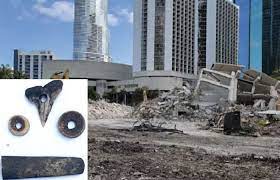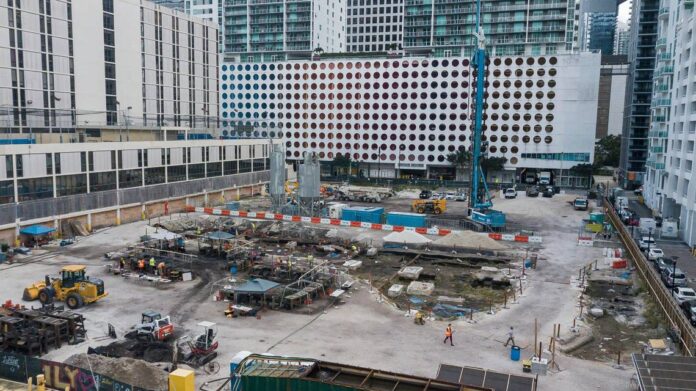In Miami, the discovery of ancient artifacts at the planned construction site for the new luxury high-rise Baccarat Residences has ignited a fierce debate. The site, located at 444 Brickell Avenue on the south bank of the Miami River next to the Brickell Bridge, has been found to contain artifacts dating back thousands of years, including bone artifacts such as points, pins, and drilled shark teeth, pumice, lithic weight, and pottery shards. The findings are significant and provide insights into the history of the Tequesta, the Native American tribe that once inhabited the area.
The Debate: Preservation vs. Development
According to William Pestle, an anthropology professor at the University of Miami, the site is crucial because it represents the birthplace of Miami. “This is a place, just like this is prime real estate today, this was prime real estate 2,000 years ago, 5,000 years ago, 7,000 years ago,” he said.

Pestle was one of many who attended the Historic and Environmental Preservation Board meeting at Miami City Hall, where some advocated for the site to receive a historical designation, while others favored development. The issue has become particularly sensitive in Miami, where there is a history of rapid development and destruction of cultural and historical sites.
On one hand, Jorge M. Pérez, the project’s developer and the founder of the Perez Art Museum, has spent millions of dollars to bring in archaeologists and equipment to preserve the artifacts. He and his supporters argue that moving forward with the development will provide jobs, a larger tax base, and growth for the city of Miami.
The Related Group, which is developing the lot, plans to build three towers up to 82 stories high and a bay walk on the property, including the Baccarat Residences. The towers will have a total of 1,400 residential units, as well as office, hotel, and retail space.
Perspective
On the other hand, local Native Americans argue that the site should be left untouched to show respect. Betty Osceola, with the Miccosukee Tribe, stated that “It is a marked grave, it’s acknowledged by the city that it exists there and just like they don’t go around digging up other people’s graves, and that they respect ours as well.”
There may be a way to find a compromise that satisfies both sides. One option would be to designate a portion of the property as a historical site and preserve the artifacts found while allowing for the development of the rest of the property. Another option would be to incorporate the artifacts into the development itself, such as by displaying them in a museum or incorporating them into the design of the building in a way that honors the Tequesta tribe and their culture.
Finding a Compromise: Incorporating Historical Significance into the Development
The Related Group has urged the board to delay any steps towards historical designation until after archaeological work at the site has been completed. They argue that they have invested tens of millions of dollars to ensure the archaeological integrity of the project and that additional designations and restrictions at the upcoming Historic and Environmental Preservation Board meeting are premature.
The property sits just west of Miami Circle, another prehistoric site that is believed to be the location of a structure built by the Tequesta. Upon its discovery in 1998, the site was purchased by the state of Florida and Miami-Dade County and later declared a national historic landmark.


